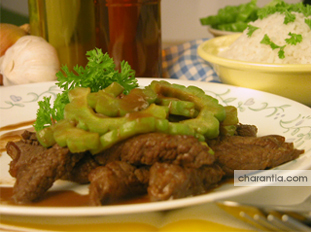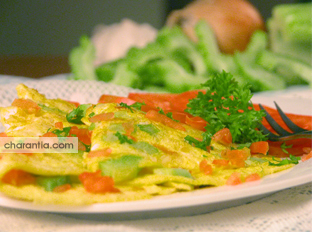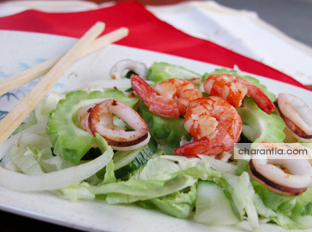- News Front Page
- Uncategorized
- Headline News
- Filipino Calgarian
- Business
- Pinoy Stories
- Community News
- Publisher's Note
- The Main Ingredient
- Views and Opinions
- Maikling Kwento
- Alberta News
- OFW – Month
- Travel News
- Health and Lifestyle
- Pinoy Toons
- Pinoy Spirit
- Entertainment
- The Philippine Lawyer
- Horoscope
- Greetings
- About Us
- Greetings From the Prime Minister
- Greetings from the President of the Philippines
- Greetings from the Premier of Alberta
- Greetings from the Mayor of Calgary
- Advertise With Us
- Disclaimer
- Subscription
Publisher's Note
- Publisher’s Note
 It was 22 years ago when I arrived in Canada and chose Calgary, Alberta to be my home. Leaving my family and friends behind, it was a new adventure for me to be in a new country without knowing anyone. That was the time I looked for a Filipino community paper and never found any, [...]
It was 22 years ago when I arrived in Canada and chose Calgary, Alberta to be my home. Leaving my family and friends behind, it was a new adventure for me to be in a new country without knowing anyone. That was the time I looked for a Filipino community paper and never found any, [...]
Visitors to Pinoytimes
Page added on November 29, 2012
Kuya Bong’s Kusina
About Ampalaya – Bitter Melon
Scientific name – Momordica charantia Linn
Ampalaya has long been a popular part of many Asian vegetable dishes. Though notorious for its bitter taste, Ampalaya is rich in iron, potassium, beta-carotene and other nutrients. But aside from its role as a healthy food, Ampalaya is especially valued by diabetics for its known anti-diabetes properties. The traditional remedy is made by pounding the raw fruits of Ampalaya into a bitter liquid, or by boiling the leaves and fruits for a few minutes, the resulting water then drank as a herbal tea.
Ampalaya has the most documented scientific reports that cite its blood sugar-lowering benefit. Research worldwide since the 1960s cites the plant’s key compounds, notably polypeptide-P, a plant insulin known to lower blood sugar levels. The plant’s insulin-like benefits have long-been enjoyed by many diabetics, who include Ampalaya as part of their daily diet, either eaten as a vegetable or taken as a tea. With the traditional use supported by modern scientific validation of the plant’s benefits, the Ampalaya is the single most promising plant/herb for diabetes today.
Now you can enjoy Ampalaya’s blood-sugar lowering benefits in a pleasant-tasting tea.
While science has proven that Ampalaya or Bitter Melon contains anti-diabetic properties, transforming the raw fruits into a finished product may alter or diminish the plant’s benefit through the manufacturing process. This study, which used Charantia itself as the tea in subjects, confirms that our product has preserved health benefits of Ampalaya. Every time you drink Charantia, rest assured you are taking in 100% Ampalaya goodness.
“Ampalaya fruit prepared as a tea is well- tolerated and may be a useful dietary adjunct in the treatment of type-2 diabetes. It has minor gastrointestinal side effects of increased bowel frequency but beneficial to those diabetic patients who are constipated.” R. Rosales, MD and R. Fernando, MD
Ampalaya Con Carne
- 2-4 medium sized ampalayas
- 4 cloves crushed garlic
- 2 tbsp. chopped onion
- 6 ginger cloves, sliced
- ½ kilo Beef, cut into 1 x ½ inch strips
- ¼ cup water
- 3 tbsp. corn starch
- 2 tbsp. sesame oil
- ½ soy sauce
- olive oil
- Mix corn starch, sesame oil, soy sauce and 3 crushed garlic cloves. Marinate beef strips in mixture for 20 minutes.
- Slice ampalaya lengthwise to discard the seeds with a spoon, then cut into strips.
- In a separate pan, heat olive oil and cook the beef. Set aside its marinade for later use.
- When already cooked, remove beef from the pan then sauté garlic, 2 ginger slices and onion till slightly brown.
- Add the ampalaya slices, the beef with its marinade and soy sauce, and simmer for 3 to 5 minutes. Best served hot with rice.
Ampalaya Omelette
- 1 medium sized ampalaya, de-seeded and chopped
- 1 small onion, chopped
- 3 garlic cloves, chopped
- tomatoes, chopped
- 2 eggs, beaten
- olive oil for sautéing
- Saute garlic and onion until slightly brown.
- Add tomatoes and ampalaya. Stir fry for a few more seconds.
- Switch heat into low-fire.
- Pour the eggs and let stand until cooked. Take care not to overcook. It should be slightly brown.
- Season with pepper or salt then serve.
Grilled Seafood Salad
- 6 pcs. medium shrimp, peeled and deveined
- 1/2 cup squid, cut into rings
- 1/4 cup fish fillet (white meat)
- 1/4 cup mussels
- 1/4 cup ampalaya, seeded and sliced
- 1/4 cup cucumber, sliced into bite size pieces
- 1 small onion sliced
- Lettuce leaves of your choice
- 6 tbsp. red wine vinegar
- 2 tbsp. lemon juice
- 1 tsp. extra-virgin olive oil
- 1/4 tsp sugar
- a pinch of salt and pepper
- Grill the shrimp, squid rings, mussels and fish fillet.
- Combine all ingredients for the salad dressing. Stir well.
- Prepare sliced veggies into a bowl.
- Toss in cooked seafood and add dressing. Serve immediately
SOURCE: www.charantia.com
RELATED STORIES
LATEST HEADLINES
- ISKWELAHANG PILIPINO (IP) RONDALLA OF BOSTON WINS THE HEARTS OF CALGARIANS
- Pinay doctor joins Medicus Family Clinic and Pharmacy
- Multicultural Ethnic Media round table with Minister of Finance Joe Ceci together with Minister of Social Services Irfan Sabir
- Trans Mountain Pipeline keeps Canada working
- Facilitating travel to Canada while keeping Canadians safe
COMMUNITY NEWS
 A new way forward for some immigration application processing times
A new way forward for some immigration application processing times Calgary Stampede 2018 Poster
Calgary Stampede 2018 Poster Alberta celebrates first Philippine Heritage Month
Alberta celebrates first Philippine Heritage Month UPAAA Welcomes New Philippine Consul General
UPAAA Welcomes New Philippine Consul GeneralPINOY STORIES
 Duterte signs National ID System Act
Duterte signs National ID System Act- Holy Week practices in the Philippines
PINOY SPIRIT
HAVE YOUR SAY
Lorem ipsum dolor sit amet, consectetur adipiscing elit, dolor sit ipsum.PROMOTIONAL BLOCK
Lorem ipsum dolor sit amet, consectetur adipiscing elit, dolor sit ipsum.TRAVEL NEWS
PINOY TOONS
Tags
Archives




















